Last updated on September 2nd, 2024
Featured image: Panama City’s old town offers women museums, historical sites and restaurants waiting to be explored. | Photo by Photo by Ángel López on Unsplash
There’s much to discover in Panama, the ‘country of butterflies’
By Carolyn Ray, Editor, JourneyWoman
Although I’ve overlooked Panama in the past when planning travel to South America, I decided it was time to visit Panama City on my way to Colombia in September 2022. In 2019, over 7 million tourists visited Panama, which is promoted by Panama’s Ministry of Education as the “abundance of fish, trees and butterflies”. In September, I knew, there would be less tourists, more availability at restaurants, and less expensive rates at apartments. I was also able to book my travel on points, which always makes me happy. And best of all, the weather at this time of year is a comfortable 75 degrees (with some afternoon thunderstorms.)
During my brief stay, I was surprised to learn that Panama has made significant strides advancing sustainable tourism and a more inclusive tourism model, one that showcases the extraordinary ethnodiversity and biodiversity of the country. Because of its work empowering local communities, the country was chosen as the top global destination in the 2021 Newsweek Future of Travel Awards.
“It wasn’t until 2022 that the Panama government showed much interest in tourism,” says Anna Pollock, Founder of Conscious Travel and the recipient of the 2022 JourneyWoman Award. “While slow out of the tourism planning gate, the country is now poised to leap ahead with its new nature and culture-based master plan designed to attract an expanding market of conscious travellers. I particularly applaud the focus being given to sustainable community-based tourism designed to build localised capability, self-organisation and also prioritises nature-positive activities. Much of the progress is due to the volunteer hours and insights invested by the Panamanian Foundation for Sustainable Tourism (APTSO) who’ve been committed to enabling local engagement from the start.”
Panama connects Central and South America
Panama plays a unique role in our world, connecting Central and South America. It was formed by volcanic activity between three and 15 million years ago, creating a land bridge between North and South America. Not only did Panama change the world map, but it altered the circulation of oceans and the course of biological evolution, allowing animals to migrate from one continent to the other. According to Science Magazine, 150 years ago, the striking similarity of marine animals on either side of the Isthmus of Panama was sufficient to convince naturalists that a seaway had once flowed between the Pacific Ocean and the Caribbean Sea.
Today, Panama has the most species recorded of all Central American countries. In all, Panama houses over 10,444 different types of plant species including 1,200 orchid varieties, 678 fern species and 1,500 varieties of trees. There are 255 species of mammals and 972 indigenous bird species – 10% of all bird species found on Earth! In addition to birds, Panama is home to over 1,800 species of butterflies (out of 20,000 globally) and 222 different species of amphibians, not to mention legendary yearly migrations of birds and sea turtles on the Azuero peninsula and surrounding areas.
With 12 million acres of rainforest, beautiful white-sand beaches in the Caribbean and dramatic black-sand beaches along parts of the Pacific, Panama is bordered by Costa Rica to the west, Colombia to the southeast, the Caribbean Sea to the north, and the Pacific Ocean to the south. Its capital and largest city is Panama City, whose metropolitan area is home to nearly half the country’s four million people.

The new and old: A panoramic view of Panama City’s modern skyline across from the historic district of Casco Antiguo / Photo by diego_cervo on Envato
The fusion of old and new
When the Spaniards settled Panama in the early 1500s, they saw the opportunity for trading and even envisioned a canal to connect the two great oceans as early as 1524. In 1821, Panama joined with Colombia, Ecuador, and Venezuela to form the Republic of Gran Colombia. This republic dissolved in 1830, but Panama remained part of Colombia until 1903, a date known as “Separation Day,” which commemorates the creation of the Republic of Panama. To learn more about the history of Panama, read this article from the BBC here.
Perhaps Panama is best known for the 45-mile long Panama Canal, which became a pivotal trade route when it was built in 1914. When Panama separated from Colombia in 1903, it signed a treaty that allowed the U.S. to control a strip of land on either side of a new canal. In 1999, Panama assumed full control of the Panama Canal. Panama’s notoriety increased with the overthrow of Gen. Manuel Noriega in 1989 after he was found to be involved in drug trafficking. Panama’s first woman president, Mireya Moscoso was elected a few years later in 1999.
Casco Antiguo, also known as Casco Viejo, or the ‘old quarter,” is Panama City’s historic district. Considered a UNESCO Cultural World Heritage Site, the district dates back to 1673, and features vibrant plazas and picturesque brick-paved streets surrounded by colorful buildings. While you can see (and walk to) the more modern Panama City in the distance, I spent most of my time in the old town, and didn’t even see everything I wanted to! There’s more than enough to explore, with charming cafes, restaurants and historical sites. It’s also perfect for long stays, as my partner found out when he stayed there for two months to learn Spanish. (For tips on Long Stays, read this!)
5 Things for Women to Love About Nicaragua
Travelling as a solo woman to Managua, Nicaragua, there is much to love in this Central American country.
Where to stay in Panama
My home base was in the old town, Casco Viejo, which has wonderful, low-rise architecture. I felt safe being there alone. That said, there are parts of the old city that I would not recommend. Personally, I would not walk past Calle 11 Oeste (past Plaza Herrera) or beyond Calle A/Avendia B, where the police station is located. There is a very busy Selina Hostel right on the edge of this area and I would not recommend it for solo women as it borders this part of town. It’s also very noisy at night and the bars stay open until 2 or 3 in the morning.
There are many other places to say in Casco Viejo, including vacation rentals and boutique hotels. I stayed at Las Clementinas, which has six rooms with kitchens, right above the Mahala restaurant (which is delicious by the way). Other hotels that looked appealing included the Hotel La Compania, American Trade Hotel, and the Villa Palma Boutique Hotel.
The Rey supermarket has a pharmacy and there are vegetable and fish markets nearby. For language schools, try Casco Antiguo Spanish School, which offers weekly semi-private programs for about US $200 a week (4 hours a day).
Note: There are two official currencies in Panama: the United States Dollar and the Panamanian balboa. US bills are used but change is given with the Panamanian balboa.
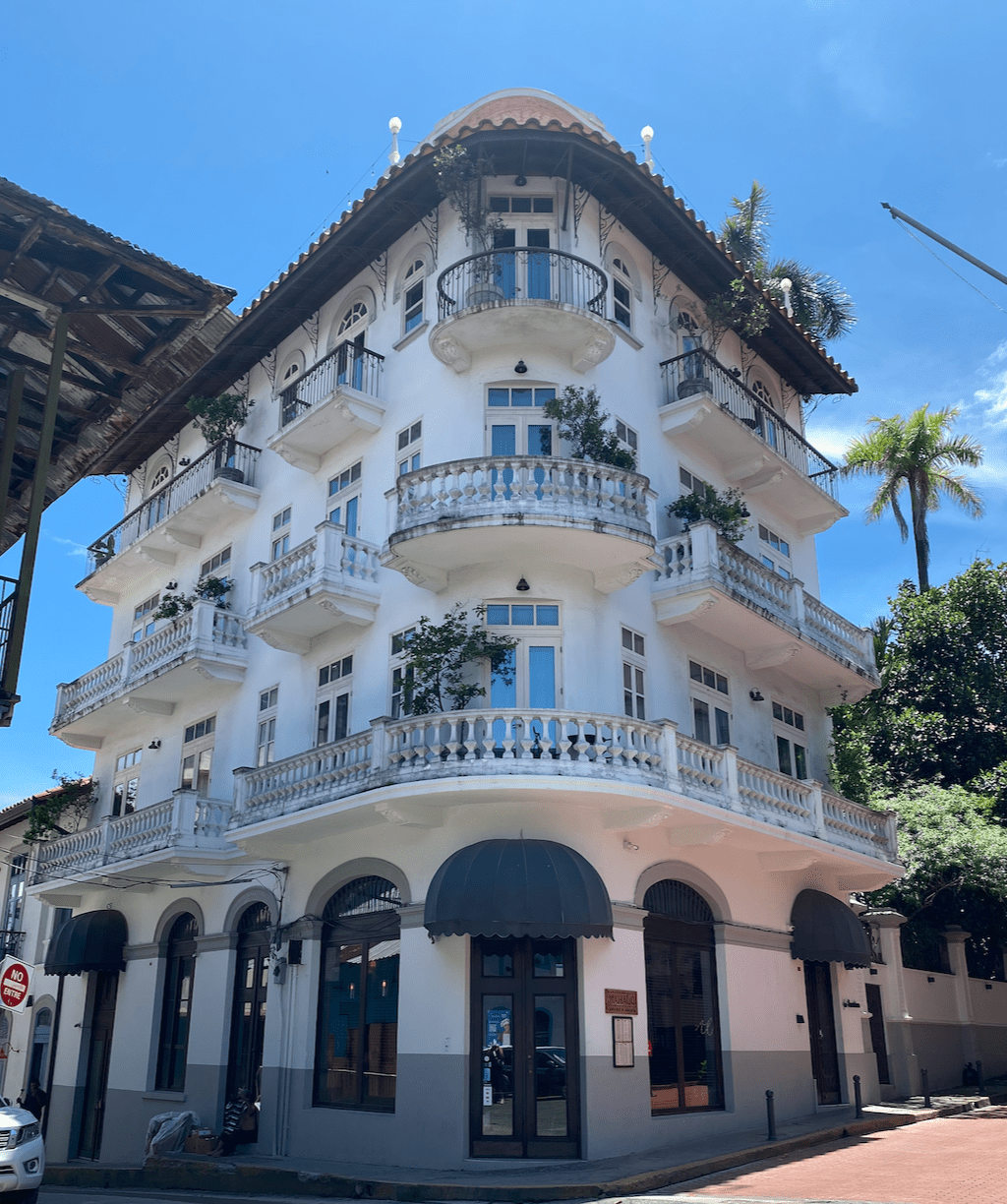
My apartment at Las Clementinas was on the top floor #6/ Photo credit Carolyn Ray
14 Things to Do in Casco Viejo, Panama
Casco Viejo is a small area, with only a few streets. Much of the area is reserved for the Presidential Palace which is secured by gates and guards. But the rest is yours to explore!
1. Walk along the cobbled streets and admire the colonial architecture, low-rise buildings and lush flowers. Find a walking tour here!
2. Stroll the Malécon and see the downtown skyline and the ships waiting for the Canal in the distance.
3. Stop by the Panama Canal: Built by the United States in 1903, joins the Atlantic and Pacific Oceans. The canal was built by 75,000 workers between 1904 and 1914 and allows boats to sail between the two oceans without having to go all the way around the South American continent.
PS: Why take a guided tour when you can Uber for $5! Make sure you know when the ships visit (morning and mid-afternoon is best).
4. Enjoy the landmarks and churches (Arco Chato, the ruins of the Church of San Domingo, Iglesia de San Felipe Neri, Catedral Basilica Santa Maria al Antigua).
5. To get the best views of Panama City, the entrance of the Panama Canal and Casco Viejo, take an Uber to Ancon Hill and climb the gradual paved path to the summit.
6. Learn about history and culture at one of the old town’s many museums (Panama Canal Museum, Historia de Panama, Museo de la Mola). Get museum tickets here.
7. Spend an afternoon at the BioMuseo, designed by Frank Gehry in 2014, and shows the interconnection between flora, fauna and human history and contexts everything in large outdoor murals and exhibits. Find tickets here.
8. Tap your feet to Jazz at Danilo’s Jazz Club next to the American Trade Hotel (make a reservation, 8 pm). You can also order light snacks.
9. Enjoy a ‘candlelight’ dinner in Plaza Herrera listening to strolling musicians, with your choice of restaurants ranging from Italian to steakhouses.
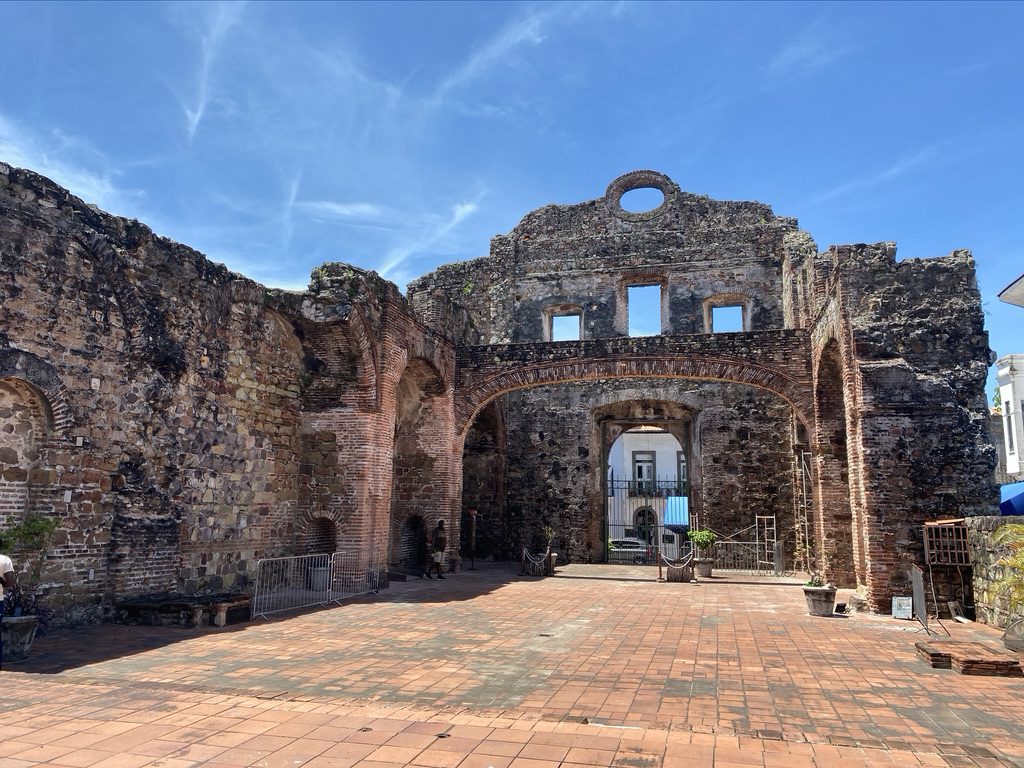
Arco Chato (Flat Arch), in San Domingo Church, became a national monument in 1941 The arch collapsed but it’s a beautiful spot to visit/ Photo by Carolyn Ray
10. Take the Taboga Express Fast Ferry to Taboga Island ($24 return); bring all your supplies.
11. Enjoy delicious meals and coffee (I recommend Mahalo, Corchu wine bar, Fonda Lo Que Hay to name a few)
12. Rent a bike and travel from the Cinta Costera and follow a path that takes you through downtown Panama.
13. Explore the whole city by using the modern Metro for only .35 a trip. (Or walk!)
14. There are many local companies that provide day trips to the San Blas Islands. The ride is very rough, so be prepared for a long, hard day and plan for rain in the fall. Bring water and snacks, as there is very little out there. You will travel in a 4×4 car with no more than 4 other passengers. The last 15 kilometers are over a rainforest mountain pass and the roads are not maintained. Be prepared for bumps and turns. Most of the day is spent on the water visiting other islands, relaxing on beautiful beaches and indulging in local cuisine. Find a tour to the San Blas Islands here.
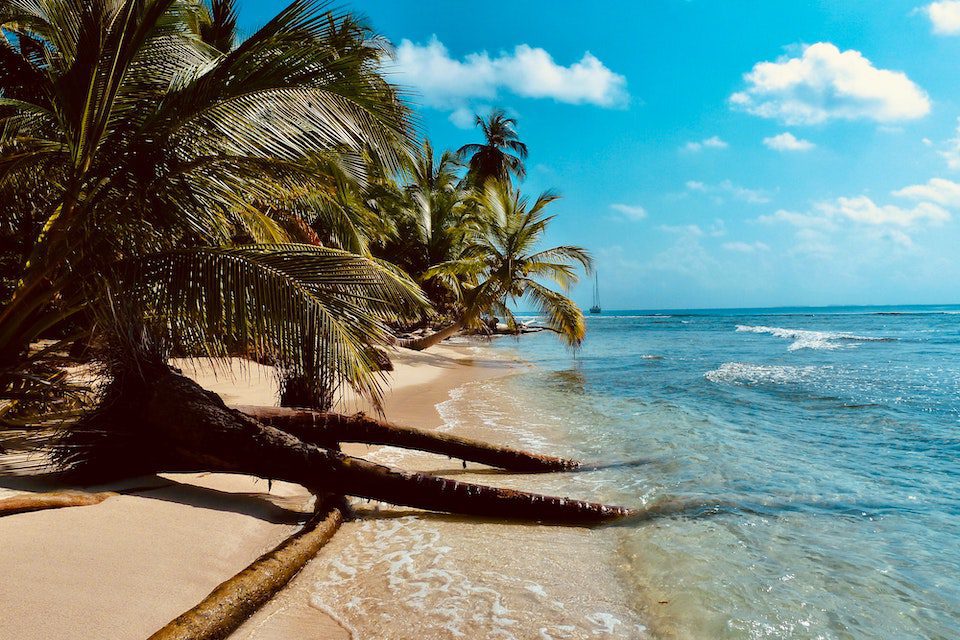
The picturesque San Blas Islands are well worth a visit from Panama / Photo by Azzedine Rouichi on Unsplash
Women-focused experiences in Panama
I always try to make time to visit women-owned businesses and entrepreneurs but with limited time, I just couldn’t do it. These come recommended by Panama Tourism.
Chuquita Restaurant
If you’re in Panama City, make sure to stop by Cuquita Restaurant which is owned by Chef Cuquita Arias. She is one of the most famous cooks in the Panamanian culinary field. A lover of gastronomy who has known how to highlight her Creole dishes with a feminine, sensitive and artistic touch. Chuquita has even cooked for princes, presidents and even for Pope Francis at World Youth Day 2019, which took place in Panama. She has raised the name of her country in books, magazines and television programs, but if there is something that characterizes her, it is her desire to make her gastronomy known to the whole world.
Other women-owned activities in Panama
- If you visit Bocas del Toro, make sure to stop by San Cristobal Island to visit The Ngabe Indigenous Woman. These indigenous women are dedicated to ecotourism, including Organic Cacao experiences. Tourism has given the Ngabe women the opportunity to empower and improve the quality of life for both their families and community.
- For a farm-to-table experience, stop by Cerro Brujo Gourmet in Tierras Altas which is owned by Chef Patricia Miranda. Patricia specializes in sustainable cuisine with fresh and organic ingredients.
- OMUB (stands for: Organización de Mujeres Unidas de Bonyic) – Bonyic is a Naso Indigenous community, and this women’s organization is dedicated to Community and rural tourism. Their mission is to preserve and promote the cultural and natural heritage of the Naso community, through tourism, ethnobotany and traditional indigenous knowledge.
- Restaurante Maria Auxiliadora – A group of 9 women currently own a community restaurant of the same name on the beachfront in Playa Arrimadero, Río Grande, Soná, and Veraguas Province. About 18,000 people are estimated to visit this summer. The restaurants offer seafood and creole food with sustainability practices, like consuming only local species that are not vulnerable and selecting only fish that are part of the reproduction cycle, etc. (Restaurant is their family income)
Plan Your Trip to Panama
Get started with resources recommended by the JourneyWoman community
Book Your Flights
Use tools like Expedia or Google Flights to look up the best flight prices. Panama City is a huge hub for Copa Airlines’ flights to South America, so the airport is very modern. I flew from Toronto to Cancun to Panama City on points. Take a white taxi from the airport for about $30 (USD cash only) but use Ubers to get around – most trips are about $5 USD (Uber is more trusted than taxis). When departing, reserve an Uber.
Find Somewhere to Stay
Find a hotel on Expedia and earn points towards free stays. Hotels.com offers a free night stay for every 10 nights booked. Looking for an apartment or something more long-term? Check out VRBO.
Insure Your Trip
Travel insurance is more important than ever. Compare plans and policies for the best coverage for your trip using Insure My Trip. Traveling for an extended amount of time? SafetyWing offers ongoing coverage on a month-to-month basis, and World Nomads offers coverage for extended trips.
Travel Extras
Don’t forget your JourneyWoman branded accessories while you’re on the go!
More on Central and South America
Not All Wellness Retreats Are Equal: Here’s How Women Can Find the Right One
Not all wellness retreats are created equal. Diana Ballon shares her tips on how to choose a wellness retreat that’s right for you.
Travel with Purpose: Volunteering at a Turtle Conservation Project in Costa Rica Makes My Dream Real
As a volunteer on a turtle conservation project in Costa Rica with Conservation VIP, I fulfilled a long-held dream to help baby turtles.
G Adventures Expands Itineraries for Older Women on 2025 Classic, Dr. Jane Goodall Collection and Geluxe Trips
G Adventures is expanding its range of adventure trips for older women, focusing on affordability, longer stays and unique accommodations.



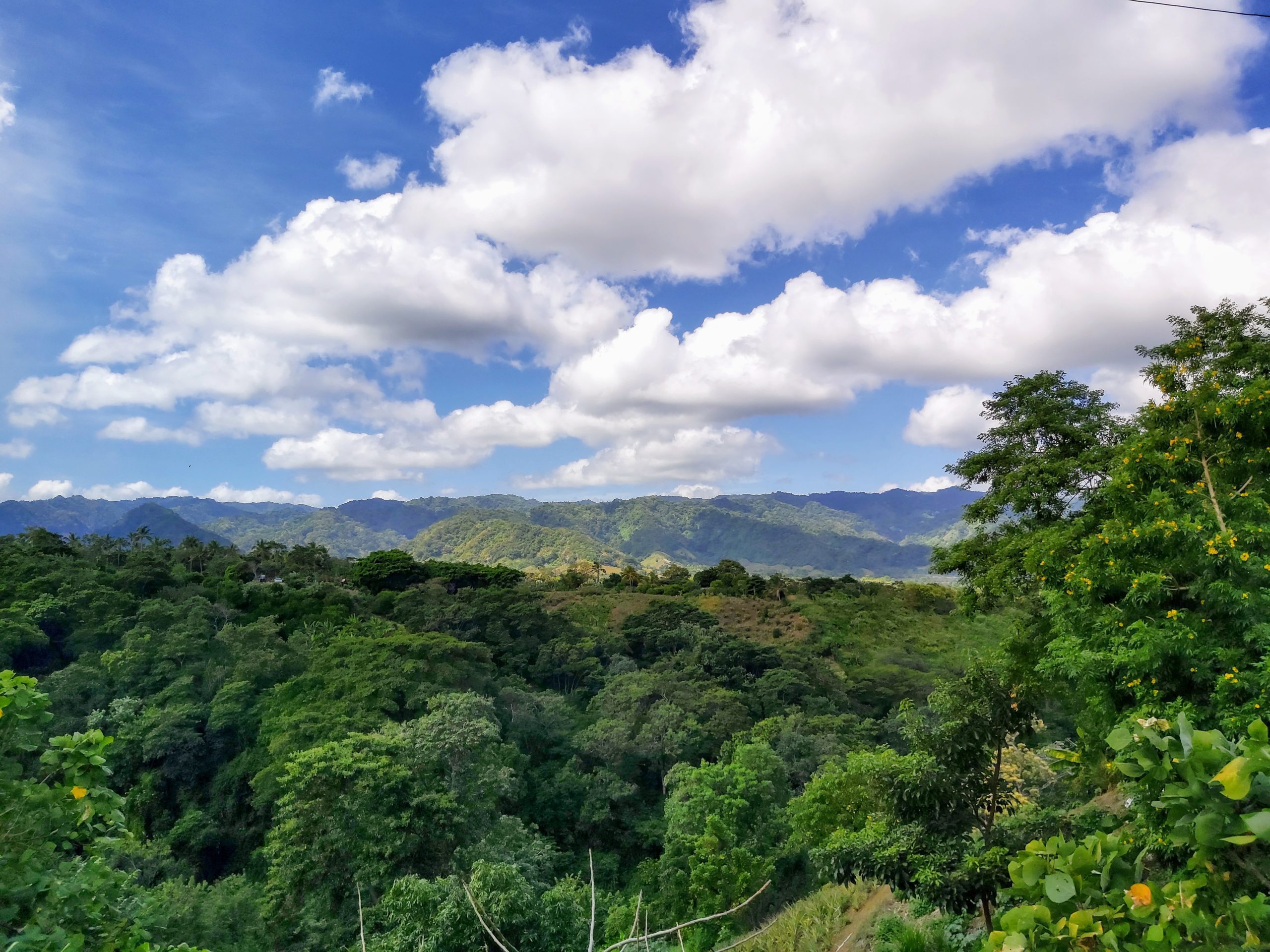
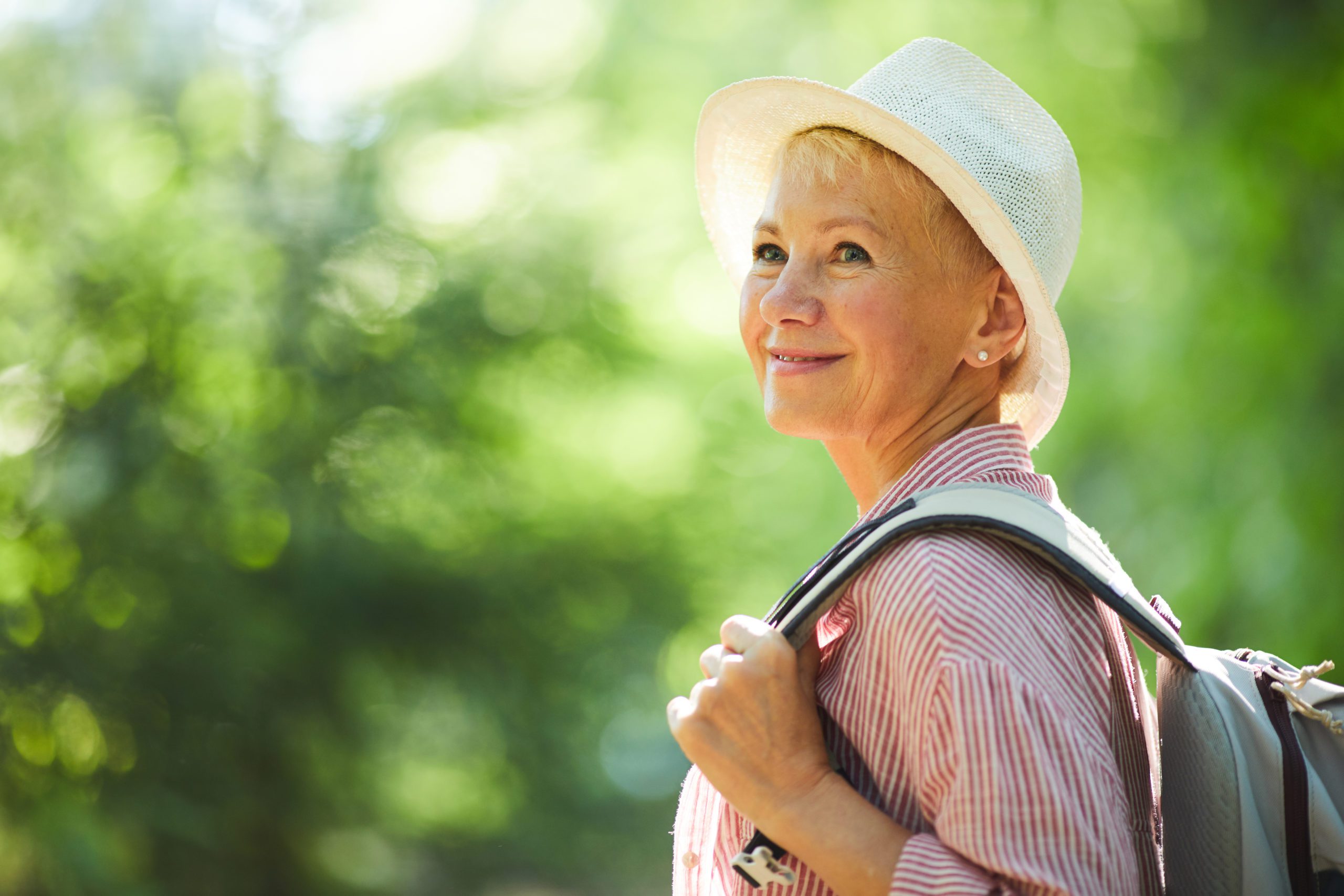
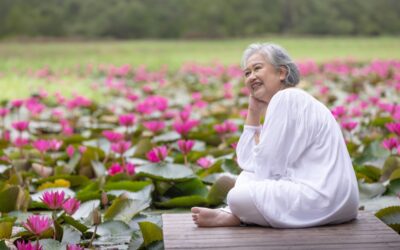
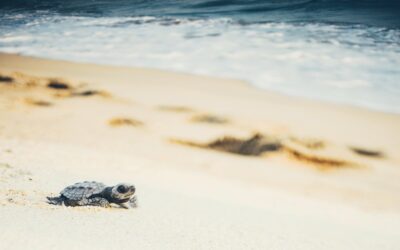
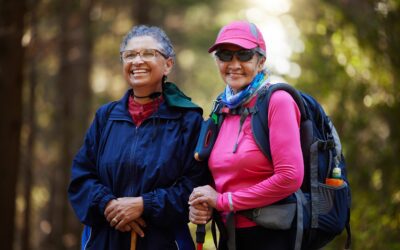
wonderful place to go ! love reading your blog